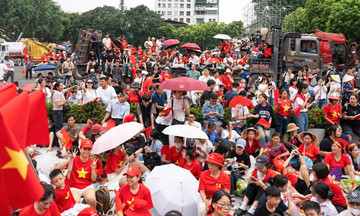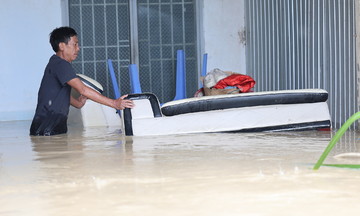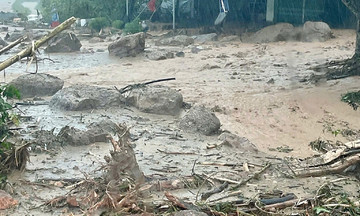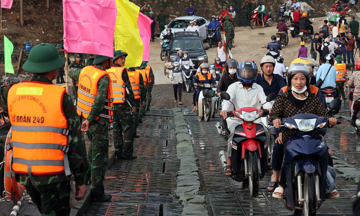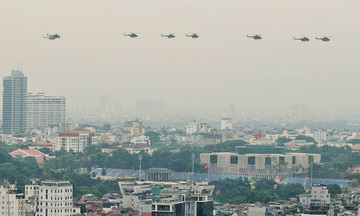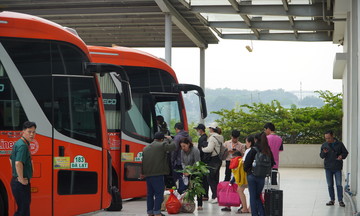By the end of 2024, Hanoi had over 9.2 million operating vehicles, excluding those belonging to central agencies, according to statistics from the Department of Transportation (now the Department of Construction). This includes 1.1 million cars and more than 6.9 million motorcycles. An additional 1.2 million personal cars and motorcycles from other provinces and cities also circulate within the city.
According to an assessment by Hanoi's Department of Natural Resources and Environment (now the Department of Agriculture and Environment), traffic is one of the five main sources of air pollution. Common pollutants include: Fine particulate matter PM 2.5, PM 10 dust, nitrogen dioxide (NO2), sulfur dioxide (SO2), carbon monoxide (CO), and ground-level ozone (O3).
 |
Air pollution in Hanoi, 11/2023. Photo: Ngoc Thanh |
Air pollution in Hanoi, 11/2023. Photo: Ngoc Thanh
To assess the pollution contribution of each vehicle type, Ngo Quang Khoi and colleagues, funded by Hanoi National University, researched a street-scale dispersion model framework for road traffic air pollution in Hanoi.
Published in 2023, the study utilized vehicle count data from previous projects by the Japan International Cooperation Agency (JICA), the Hanoi People's Committee, and the Ministry of Transport. Air pollution data was collected from 10 monitoring stations along roads managed by the Hanoi Environmental Protection Sub-Department: Trung Yen, Minh Khai, Hang Dau, Hoan Kiem, Kim Lien, My Dinh, Pham Van Dong, Thanh Cong, Kim Mai, and Tay Mo.
The study found that fossil fuel (gasoline and diesel) motorcycles contribute 87% of CO emissions. This percentage only drops below 80% between 10 PM and 5 AM, while cars contribute 9%. For overall PM pollution, motorcycles contribute the most at 66%, and cars 13%.
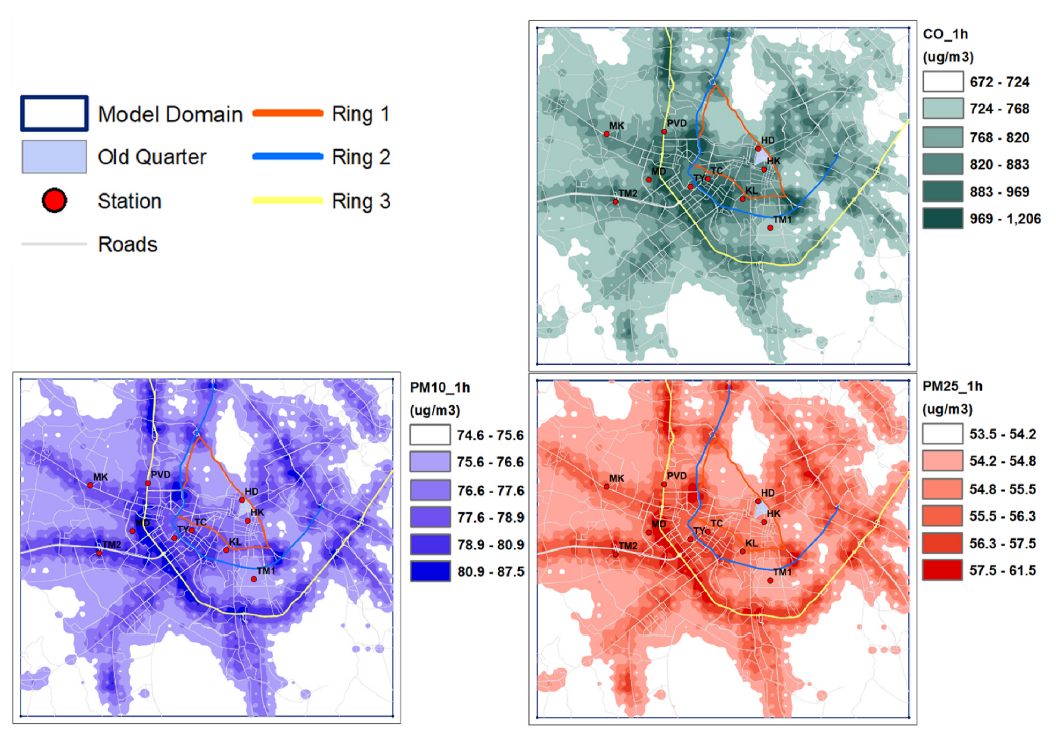 |
Air pollution levels around Hanoi's ring roads. |
The study also highlighted CO, PM 10, and PM 2.5 pollution hotspots concentrated along ring roads, radial roads, and specific intersections. Air pollution within Ring Road 1 is moderate, except for the Old Quarter, a popular tourist destination.
Ring Road 3 has the highest pollution concentrations, at 1,206, 87.5, and 61.5 μgm for CO, PM 10, and PM 2.5, respectively. The PM 2.5 concentration is almost double the national standard.
The study notes that Ring Roads 2 and 3 mark the boundary of developing areas, with many main roads and highways, resulting in more heavy vehicles and higher PM levels. Conversely, Ring Road 2 has many residential areas with a high volume of motorcycles, leading to higher CO emissions.
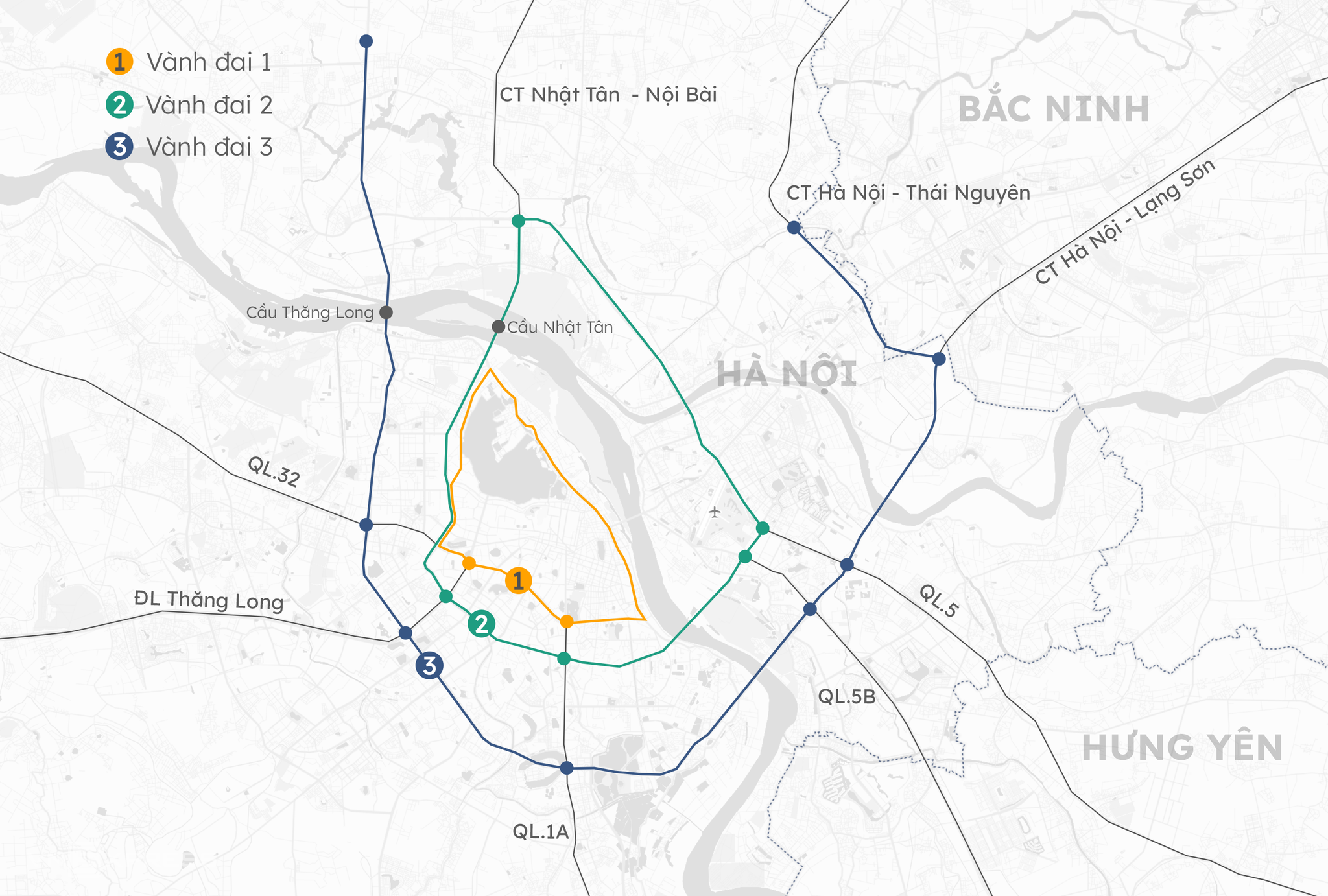 |
Hanoi's Ring Roads 1, 2, and 3. Graphics: Hoang Khanh |
Hanoi's Ring Roads 1, 2, and 3. Graphics: Hoang Khanh
The World Bank recommends electric vehicle transition as the best solution to reduce PM 2.5.
Dust, including PM 10, PM 2.5, and suspended dust, is the biggest air pollution problem in Hanoi. According to the Ministry of Agriculture and Environment, the annual average PM 2.5 value at continuous automatic monitoring stations consistently exceeds the standard by two to three times.
The "Clean Air for Hanoi" study, published by the World Bank (WB) in 2023, indicates that one-third of PM 2.5 originates within Hanoi, with the rest transported from outside areas (Red River Delta, internationally).
Transportation contributes approximately 25% of PM 2.5 pollution; nearly 35% comes from industrial activities, including large power plants, industries, and craft villages; 10% from residential areas, primarily biomass burning for cooking; 20% from ammonia sources in livestock and fertilizers; and about 7% from open burning of agricultural byproducts.
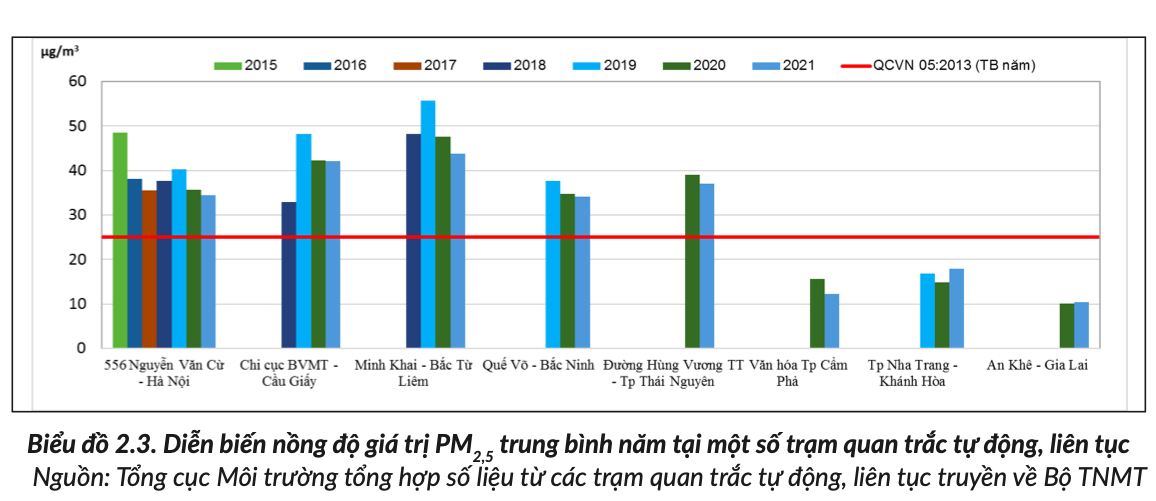 |
PM 2.5 pollution trends. Photo: National Environmental Status Report |
PM 2.5 pollution trends. Photo: National Environmental Status Report
The WB suggests that reducing traffic emissions offers the most significant PM 2.5 reduction potential for Hanoi. Four implementable measures include: Replacing gasoline motorcycles with electric motorcycles; replacing gasoline and diesel cars with electric cars; implementing EURO 5 or EURO 6 standards for vehicles; and replacing diesel buses with clean fuel buses.
The WB estimates the investment need for this sector at 1.56 billion euros, encompassing the replacement of gasoline and diesel vehicles with electric alternatives and implementing higher emission standards from EURO 5 to EURO 6. Among these measures, the WB believes that replacing fossil fuel motorcycles and cars with electric versions will have the most significant impact on PM 2.5 reduction.
However, the WB notes that even with the strictest emission control measures, limiting action to Hanoi or any single province won't be enough for the capital to effectively achieve PM 2.5 levels within the national standard.
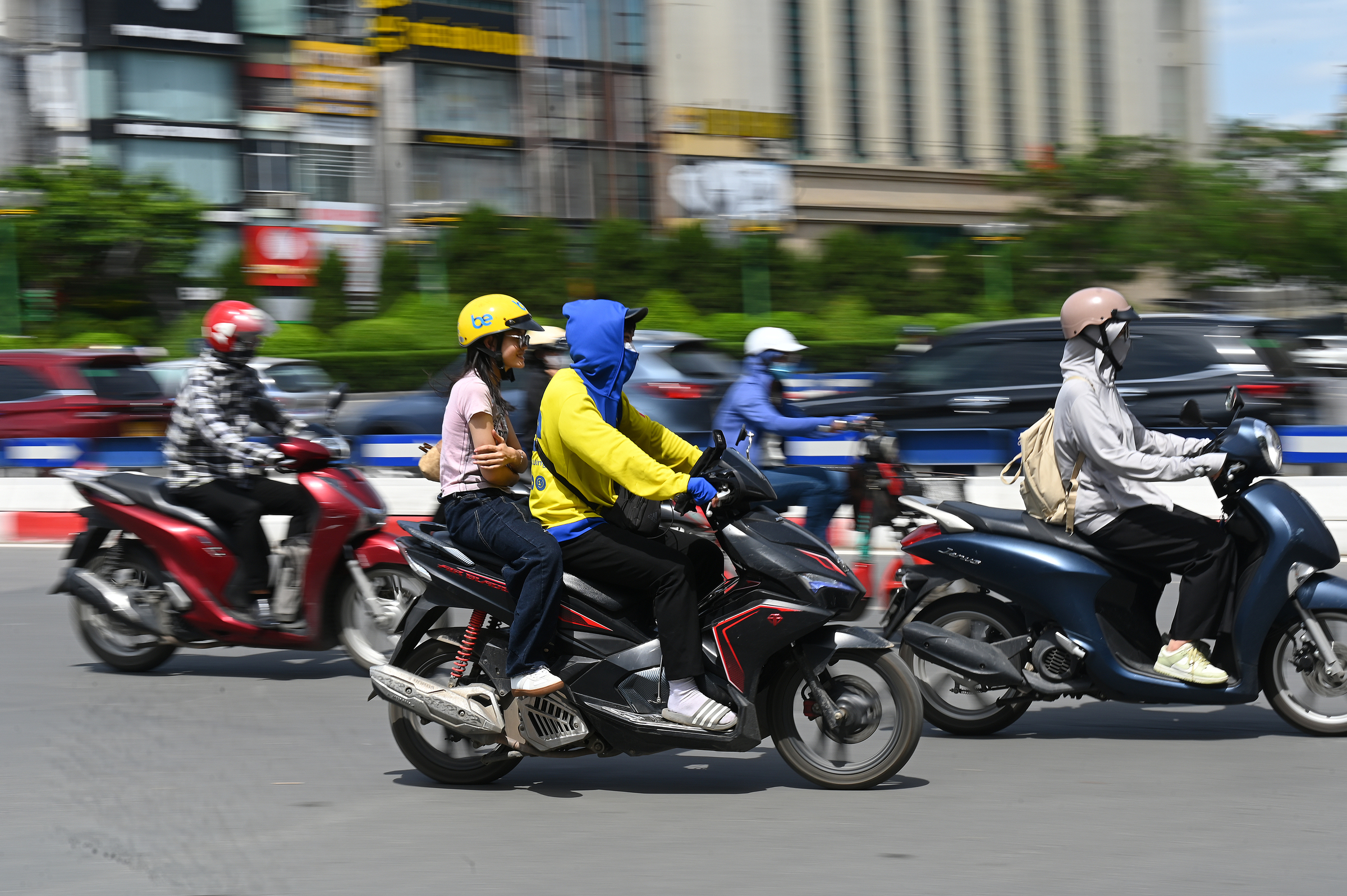 |
Most vehicles in the capital run on gasoline. Photo: Giang Huy |
Most vehicles in the capital run on gasoline. Photo: Giang Huy
"Policies focused solely on Hanoi can reduce ambient PM 2.5 levels by no more than 20% by 2030, to about 48 μg/m3, still nearly double the national standard", the WB cautions, emphasizing that much of the pollution comes from outside Hanoi. Therefore, coordinated action with neighboring provinces is essential for effective air quality improvement in Hanoi.
To address environmental pollution, the Prime Minister issued Directive 20 on 12/7, requiring Hanoi to implement solutions for individuals and organizations to transition vehicles, ensuring that no fossil fuel-powered motorcycles are circulating within Ring Road 1 by 1/7/2026.
From 1/1/2028, in addition to banning gasoline-powered motorcycles, personal fossil fuel cars will also be restricted within Ring Roads 1 and 2. By 2030, this will apply to all personal fossil fuel vehicles within Ring Road 3.
Gia Chinh





